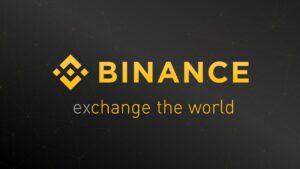Here’s a complete post about AirTM in Turkey in English:
How to Use AirTM in Turkey: A Complete Guide
Introduction
AirTM has become one of the most practical tools for people living in countries with strict financial regulations or limited access to international payment systems. In Turkey, where foreign exchange controls, inflation, and restrictions on online payments often create challenges, AirTM provides a flexible alternative to move, store, and convert money securely.
This guide will walk you through everything you need to know about using AirTM in Turkey — from setting up your account to funding, withdrawing, and understanding the advantages it offers compared to other platforms.
What is AirTM?
AirTM is a digital wallet combined with a peer-to-peer (P2P) exchange platform. It connects users across the world who want to move money in and out of their local currency through “cashiers” (verified peers). For Turkish users, this means you can:
- Deposit Turkish Lira (TRY) and convert it into USD in your AirTM wallet.
- Withdraw USD or other currencies and receive TRY in your local bank or mobile wallet.
- Send and receive cross-border payments without relying on traditional banks or services like PayPal (which has restrictions in Turkey).
Why AirTM is Useful in Turkey
- Bypasses Restrictions: Many international platforms and wallets have limited availability in Turkey. AirTM helps bridge this gap.
- Access to Stable Currencies: Inflation and currency volatility make holding money in USD or stablecoins (like USDC) through AirTM attractive.
- Freelancers and Remote Workers: AirTM is widely used to receive international payments from clients or platforms.
- Crypto-Friendly: You can easily convert between crypto and fiat using AirTM.
How to Create an AirTM Account in Turkey
- Sign Up: Go to AirTM’s official website and register with your email.
- Verification (KYC): Upload your ID (Turkish passport, national ID, or residence permit if you are a foreigner in Turkey).
- Secure Your Account: Enable two-factor authentication (2FA) for extra protection.
Funding Your AirTM Wallet in Turkey
You can add money to your AirTM wallet using:
- Bank Transfers (TRY): Connect with a local cashier who accepts Turkish bank transfers.
- Digital Wallets: Some cashiers may accept Papara, Payoneer, or other local services.
- Cryptocurrency: Deposit Bitcoin, Ethereum, USDT, or other supported coins directly.
The funds are converted into USD balance inside your AirTM wallet, which helps you hedge against TRY depreciation.
Withdrawing Money in Turkey
When you need to cash out:
- Select Withdraw inside your AirTM account.
- Choose Turkish Lira (TRY) as your currency.
- Match with a cashier who transfers the equivalent amount to your local bank account, Papara, or another method you choose.
Fees and Exchange Rates
- AirTM Fees: Around 0.30 USD per transaction + cashier spread.
- Cashier Spread: The exchange rate depends on the peer-to-peer market in Turkey (usually higher than the official rate but competitive).
- Crypto Transfers: Blockchain network fees may apply if using Bitcoin or Ethereum.
Comparison: AirTM vs. Other Options in Turkey
| Feature | AirTM
|
Payoneer | Binance P2P
|
|---|---|---|---|
| Availability | Available in Turkey | Available, but limited | Available |
| Currency Support | TRY ↔ USD + Crypto | TRY ↔ USD/EUR | TRY ↔ Crypto |
| Peer-to-Peer | Yes (cashiers) | No | Yes |
| Best For | Freelancers, USD savings | Freelancers only | Crypto traders |
Tips for Safe Use in Turkey
- Always check the cashier’s reputation score before making transactions.
- Use crypto deposits/withdrawals if you want faster transactions and more privacy.
- Keep a balance in stablecoins (USDC/USDT) to protect against TRY devaluation.
Conclusion
For people in Turkey struggling with limited access to global payment systems, AirTM offers a reliable, flexible, and user-friendly solution. Whether you’re a freelancer getting paid from abroad, a business owner making international transactions, or simply someone looking to safeguard your money from inflation, AirTM can be a powerful financial tool.


